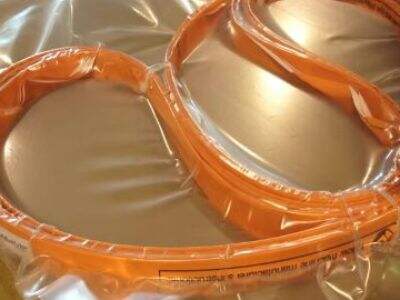But have you ever wondered what makes a band saw blade suitable for cutting metal? It’s an interesting topic! Let’s find out about it together. When you are interested in selecting a band saw blade that is ideal for cutting metal, there are several factors to consider. Knowing these things will ensure you make the right choice for your cutting requirements.
How to Select Blade Width
First, the racket blade width. The width of band saw blade you want to use will be determined by the thickness of the metal you intend to cut. If you have thin metal, a thinner blade is needed. If the metal is thick, then you need a thicker blade. This is a good rule of thumb to use, the blade must be three times wider than the thickness of the metal you are cutting. For instance, when cutting metal 1/4 inch thick, select a blade that is 3/4 inches wide or more. In this way, the blade will not stick when the blade will cut the metal properly.
Why We Need Different Tooth Shapes for Better Cutting
Now, let’s look at the teeth on the blade. Teeth shape and size of the band-saw blade serves a crucial role in its cutting efficiency. These blade types have three primary kinds of teeth: hook, raker, and wave. Hook teeth have an angle of 10 degrees and they effectively cut through thick metals in no time. Raker teeth provide a zero degree angle and are better for making clean cuts in thinner steels. Lastly, wave teeth are a combination of the hook and raker styles and you have the best of both worlds! Consider how thick the metal and how you want the cut to look when selecting the appropriate tooth shape. This will allow you to choose the teeth most appropriate for your application.
Materials and Strengths of Blades
Now, let’s talk about what the blade is and its resistance. When choosing your band saw blade, the material and hardness of the band saw blade are two very important factors to consider. Carbon steel blades are the most common type and typically the least expensive choice. They can get dull fairly quickly, so they may need replacing regularly. Similarly, high-speed steel (HSS) blades are quite better as they are much tougher and can perform operations at a higher speed through metals without getting dull. There are also bi-metal blades, which are made of both: they have a hardened edge of high-speed steel and a flexible body of carbon steel. This makes them extremely powerful! The hardness is rated on what is called the Rockwell scale. The higher the number, the tougher and more durable the blade. That means a contentedly hard blade is less prone to being worn down or damaged and therefore typically lasts longer than a soft blade.
Selecting TPI for Your Requirements
One important thing to look for: how many teeth per inch bone saw blade.TPI refers to the total number of teeth per inch on the blade. This is a crucial number, as it impacts how efficiently the blade cuts. A good rule of thumb when cutting metal is that the fewer teeth per inch, the better. Less teeth also means this is a better cutting tool, and it removes waste better while you work. Because the thickness of the metal you are cutting will also impact the TPI you will need to use, so you need to keep in mind what you are cutting and also select the proper TPI for your needs.
Tips to Keep Your Blade Fresh for the Long Haul
Now, we will discuss how to maintain your band saw blade so that it performs well and lasts a long time. It is very important to maintain properly! Make sure the blade stays clean and dry. Keeping it well-oiled is also wise. This is where a lubrication system can work wonders! While the blade is in use, the lubrication system sprays a fine mist of oil on it. This prevents overheating of the blade and it also reduces friction. Doing so would extend the blade's life and help it deliver much more consistent and efficient cuts.
To conclude, you need to consider the blade width, tooth shape, metal blade material, strength, and TPI when choosing a metal cutting band saw blade. A good blade helps you to make clean cuts and increases your cutting proficiency.
To cut metal, SWEAT has tons of premium band saw blades. Regular tooth, wave tooth, hook tooth, and raker tooth blades are all examples of different types. These can be in various materials like carbon steel, bi-metal, or high-speed steel. We have a wide range of blades for all your requirements in terms of size, TPI and strength. Super B Systems are also available including... lubrication systems and maintenance kits to help keep your blades in operation.
For a wide range of industries like automotive, aerospace, manufacturing, and welding, SWEAT offers the best products & services. Subscribe Now: Watch more videos in our series “Did You Know? We are trained to provide the right blade to keep your cutting process both running smoothly and effectively!


